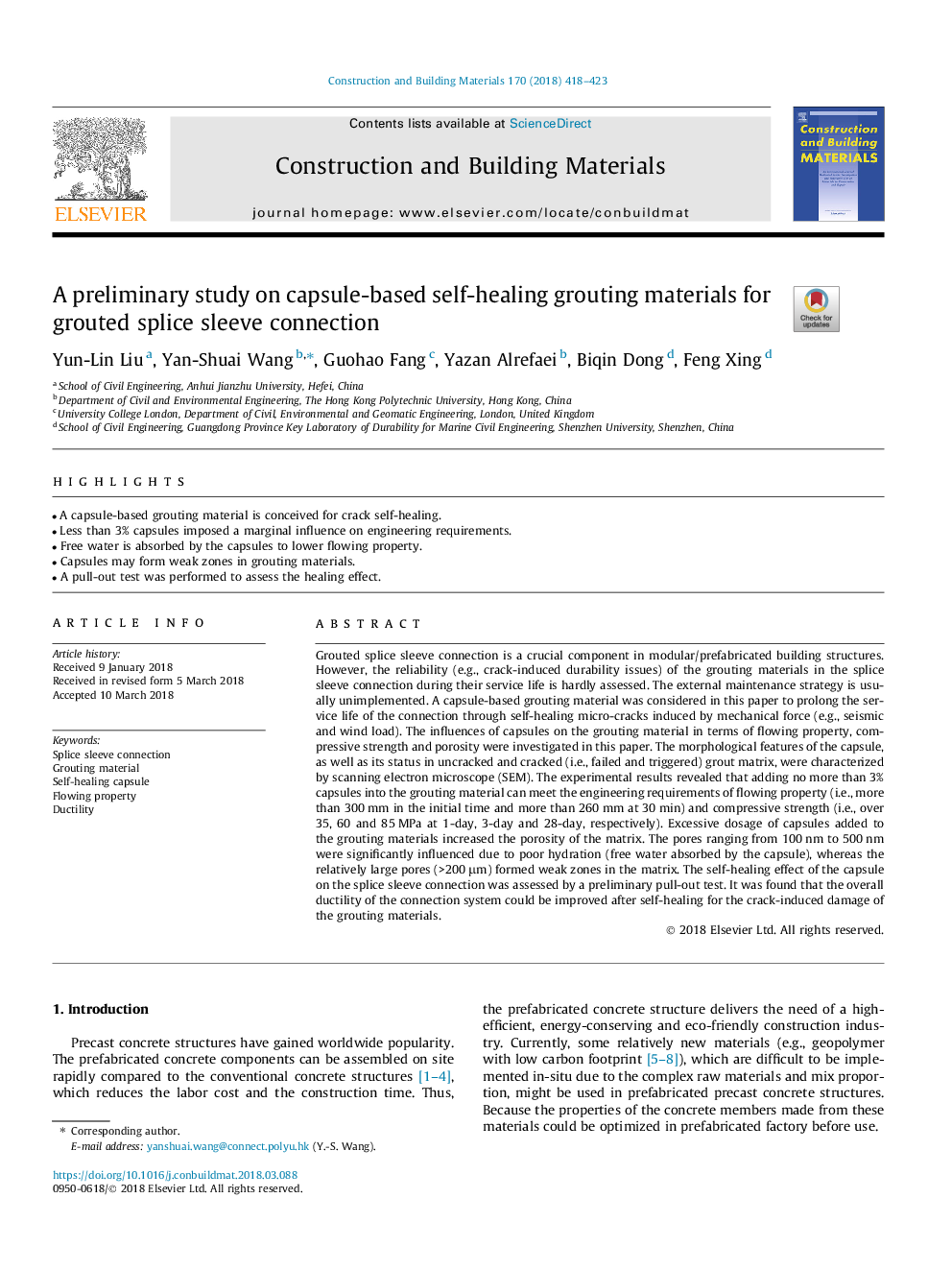| Article ID | Journal | Published Year | Pages | File Type |
|---|---|---|---|---|
| 6714194 | Construction and Building Materials | 2018 | 6 Pages |
Abstract
Grouted splice sleeve connection is a crucial component in modular/prefabricated building structures. However, the reliability (e.g., crack-induced durability issues) of the grouting materials in the splice sleeve connection during their service life is hardly assessed. The external maintenance strategy is usually unimplemented. A capsule-based grouting material was considered in this paper to prolong the service life of the connection through self-healing micro-cracks induced by mechanical force (e.g., seismic and wind load). The influences of capsules on the grouting material in terms of flowing property, compressive strength and porosity were investigated in this paper. The morphological features of the capsule, as well as its status in uncracked and cracked (i.e., failed and triggered) grout matrix, were characterized by scanning electron microscope (SEM). The experimental results revealed that adding no more than 3% capsules into the grouting material can meet the engineering requirements of flowing property (i.e., more than 300â¯mm in the initial time and more than 260â¯mm at 30â¯min) and compressive strength (i.e., over 35, 60 and 85â¯MPa at 1-day, 3-day and 28-day, respectively). Excessive dosage of capsules added to the grouting materials increased the porosity of the matrix. The pores ranging from 100â¯nm to 500â¯nm were significantly influenced due to poor hydration (free water absorbed by the capsule), whereas the relatively large pores (>200â¯Î¼m) formed weak zones in the matrix. The self-healing effect of the capsule on the splice sleeve connection was assessed by a preliminary pull-out test. It was found that the overall ductility of the connection system could be improved after self-healing for the crack-induced damage of the grouting materials.
Keywords
Related Topics
Physical Sciences and Engineering
Engineering
Civil and Structural Engineering
Authors
Yun-Lin Liu, Yan-Shuai Wang, Guohao Fang, Yazan Alrefaei, Biqin Dong, Feng Xing,
